


Want to learn more about algaecide? Read on to find out when to add algaecide to your pool maintenance routine and other helpful tips.
Many common problems with your pool or hot tub can be fixed by a pool owner. It’s also faster for a pool pro to fix your pool if you know what the problem is likely to be. Browse the articles below to learn more about identifying problems you find with your pool!
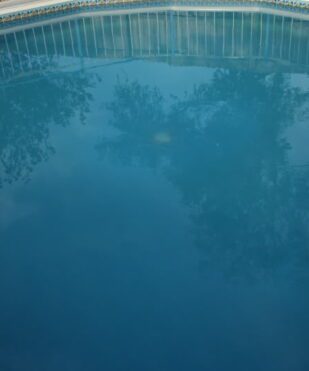
There are few things that can stop a pool party altogether—one of these things is cloudy swimming pool water. Cloudy water can be potentially dangerous, so never swim if your water looks less than clear. Testing your pool chemistry can determine whether this issue is caused by a chemical imbalance…

Want to learn more about algaecide? Read on to find out when to add algaecide to your pool maintenance routine and other helpful tips.


Have you ever wondered what draws water bugs to your pool or how you can get rid of them? Read on to find out from our pool experts.
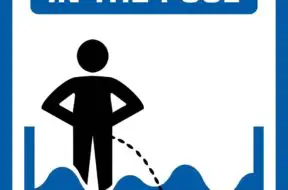

Peeing in the pool is quite common, but that doesn’t mean you should do it. Read on for why it’s not just gross but also dangerous.


Green hair from chlorine occurs because chlorine oxidizes hard metals in the pool water. Learn more about how to prevent green hair.
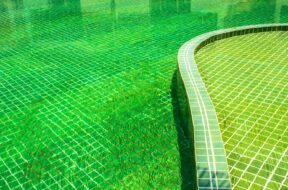

Wondering why your pool is green and how you can quickly and easily fix it? Read on for our tips and tricks on chemical imbalance!



In this quick guide, we’ll answer the question “can you over shock a pool” and unveil the factors to consider when shocking a pool.
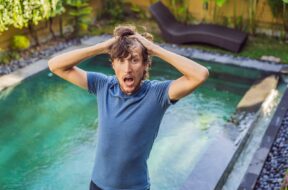

Worried your pool is leaking? Hiring someone to find a leak is expensive. Use our DIY expert guide on how to find a leak in a pool.
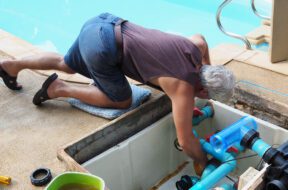

If you want something done right, do it yourself! Read on for the ultimate DIY guide on how to fix a swimming pool leak.
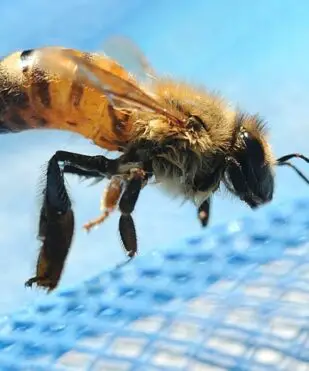

We’ve all had the experience of pure terror as a bee or wasp flies around you. Bees and wasps come out in full force during the summer time. But how do you combat this problem near your swimming pool? Today on Pool Calculator we are going to be diving into the pest problem that exists around swimming pools.


The Calcium Saturation Index (CSI) is a helpful tool for testing your swimming pool’s health. Read on to learn how to use it!
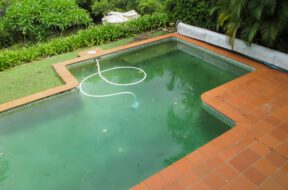

Pool algae is an unfortunate yet common problem many pool owners face. This article describes the types of algae and how you can prevent it.
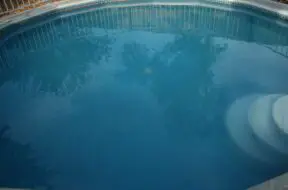

There are few things that can spoil your day more than cloudy water in your pool. Testing your pool chemistry can help find the problem.



Want to learn more about algaecide? Read on to find out when to add algaecide to your pool maintenance routine and other helpful tips.



In this quick guide, we’ll answer the question “can you over shock a pool” and unveil the factors to consider when shocking a pool.


Maintaining both pH and total alkalinity in your swimming pool is important for keeping your pool properly sanitized and non-corrosive. Total alkalinity is to pH what cyanuric acid is to free chlorine. Total alkalinity stabilizes pH levels. The ideal pool pH level is 7.4 to 7.6. The ideal total alkalinity level is 80 to 120 ppm.


The Association of Pool and Spa Professionals recommends free chlorine levels for both swimming pools and hot tubs be kept between 2.0 and 4.0 ppm. However, the Center for Disease Control recommends free chlorine stay above 1 ppm in pools and 3 ppm in hot tubs.